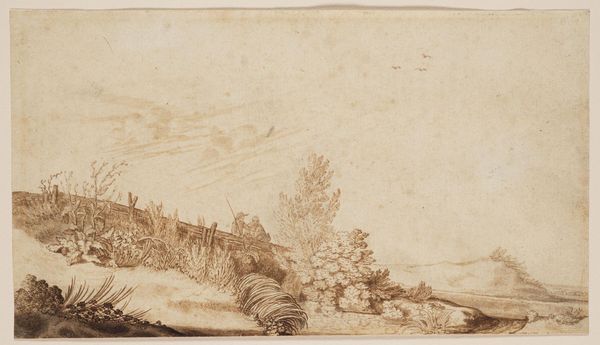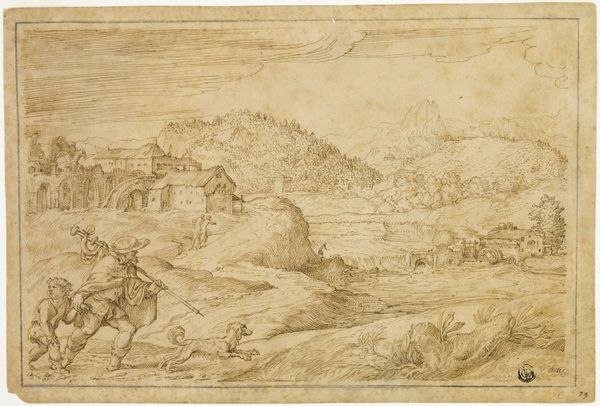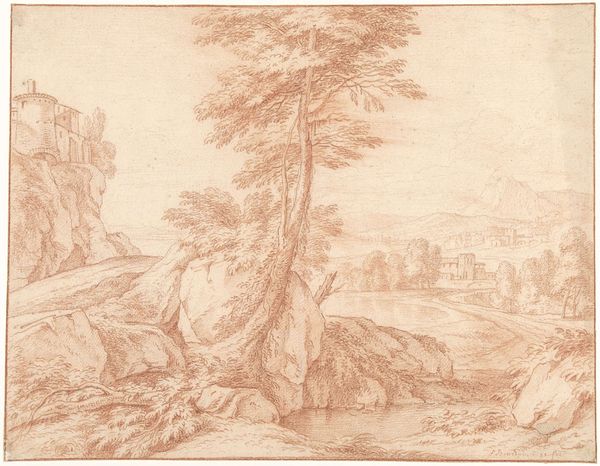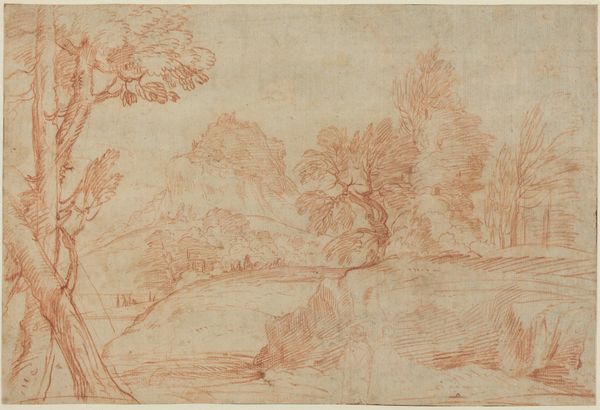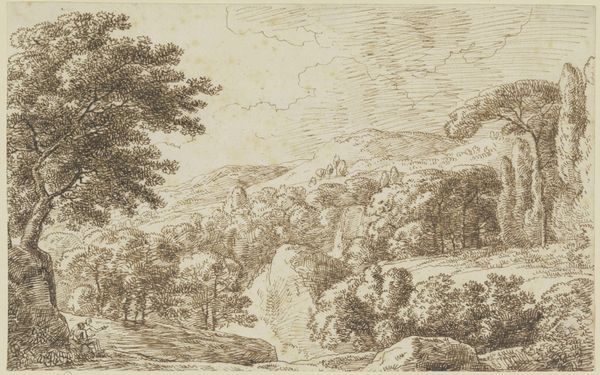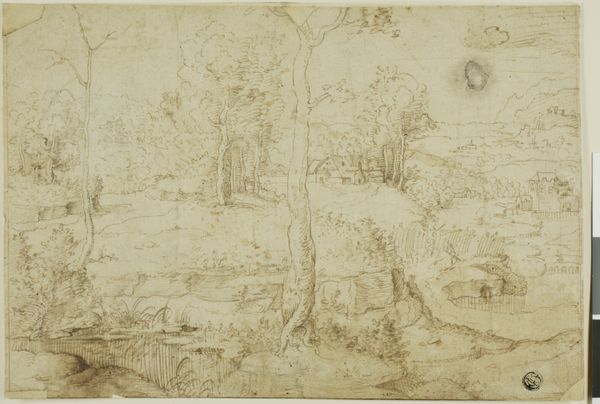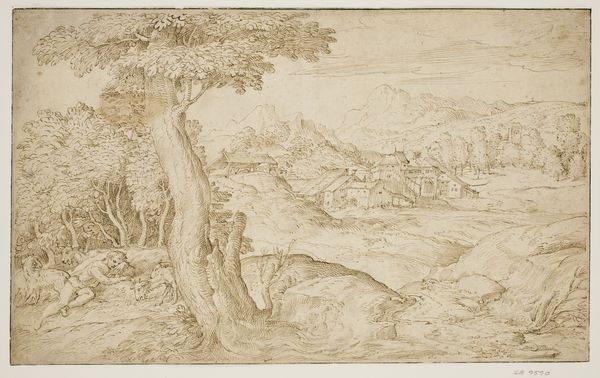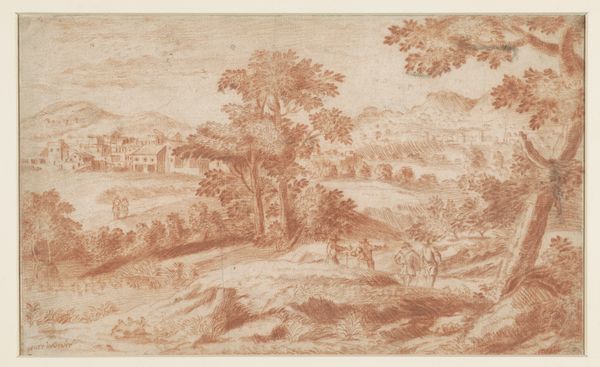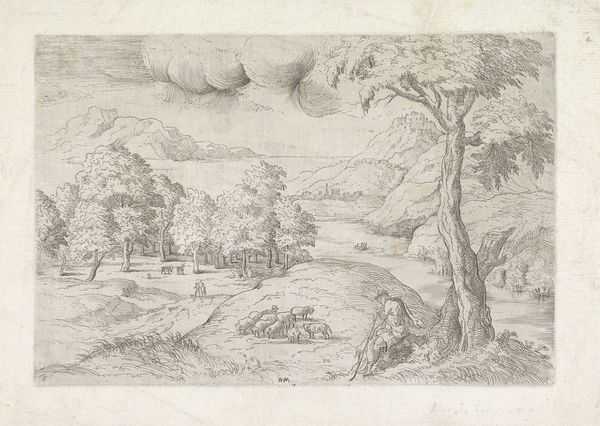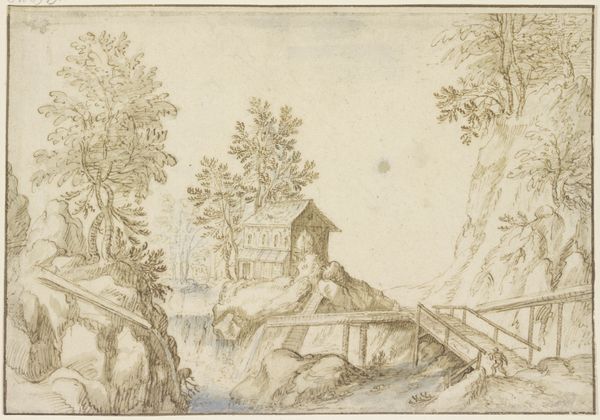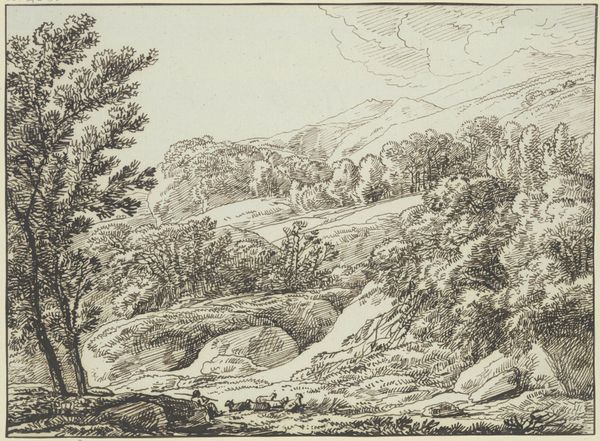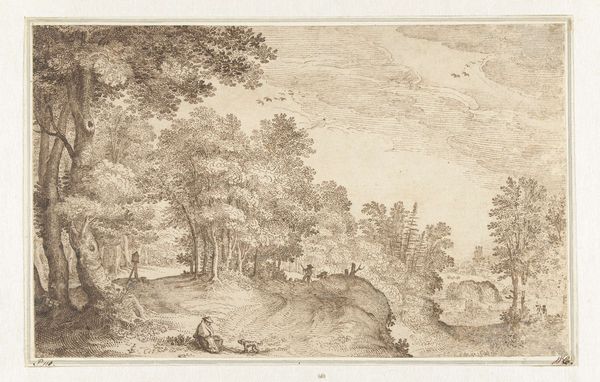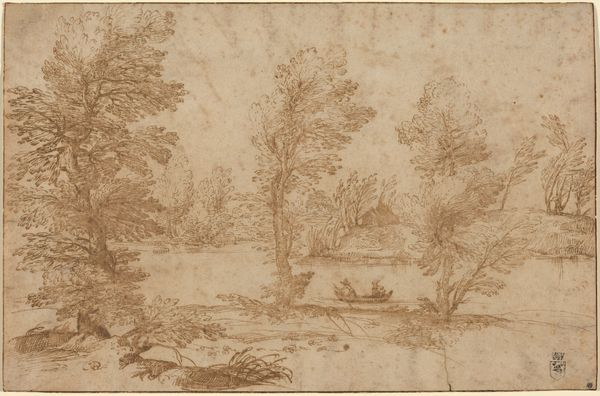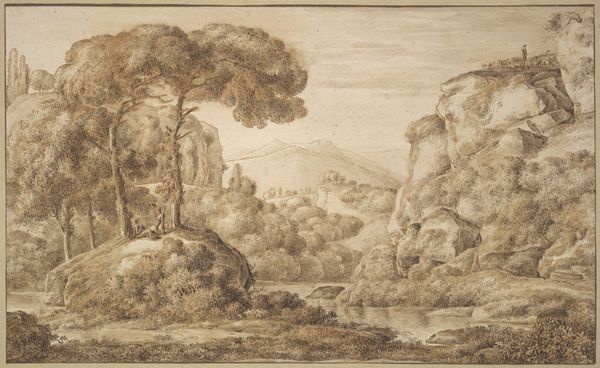
drawing, red-chalk, paper, dry-media, pencil, charcoal, architecture
#
pencil drawn
#
drawing
#
red-chalk
#
landscape
#
charcoal drawing
#
paper
#
dry-media
#
pencil
#
15_18th-century
#
charcoal
#
architecture
Copyright: Public Domain
Curator: Soothing, like a vintage postcard dipped in sepia. What are we looking at, exactly? Editor: We're observing "Southern Landscape," a drawing currently held here at the Städel Museum. While undated, its materials, red chalk and pencil on paper, combined with certain architectural features suggest a possible execution in the 17th or 18th century, rendered by the hand of J. B. Tavernier. Curator: Tavernier. Right. It’s strange; I feel an instant connection to it. Like I've wandered into a half-remembered dream of Italy, all rolling hills and quiet bridges. I get lost imagining all the stories happening beyond what the artist decided to depict. Editor: Indeed. These landscape drawings played a vital role. We see artists sketching views as preparation for larger paintings. It also fulfilled the growing market for collectible landscapes desired by an expanding, more mobile class of wealthy patrons. Travel and landscape viewing were markers of status. Curator: Status, huh? It's funny how something so... gentle can be tied to societal ambitions. To me, this is the opposite. It's intimate, immediate. You can almost feel the artist sitting right here on the bank. Editor: I agree that Tavernier's landscape possesses an inherent intimacy. Note his technical ability, how he uses varied pressure with the chalk to give shape and volume to the land, trees, and architecture. Curator: I see the precision, of course, but there's more to it. Look at the way the bridge anchors the composition, but those trees steal your focus skyward, toward that little building almost peeking above. Editor: That play of compositional elements is quite sophisticated for a drawing. One is invited to appreciate the underlying geometry and also the picturesque, even whimsical treatment. There's a calculated artistry here, I think, seeking both order and feeling. Curator: Maybe it's that balance that draws me in. Something solid, something ethereal. It doesn’t just show a place, it evokes the feeling of a place—a memory, even. Editor: Well said. It makes you think about the power of landscape to both define and transcend time, culture, experience… and social rank! Curator: Ha! I guess we’re back to status! This visit left me with a new feeling about landscape drawing as both documentation and emotional touchstone.
Comments
No comments
Be the first to comment and join the conversation on the ultimate creative platform.
